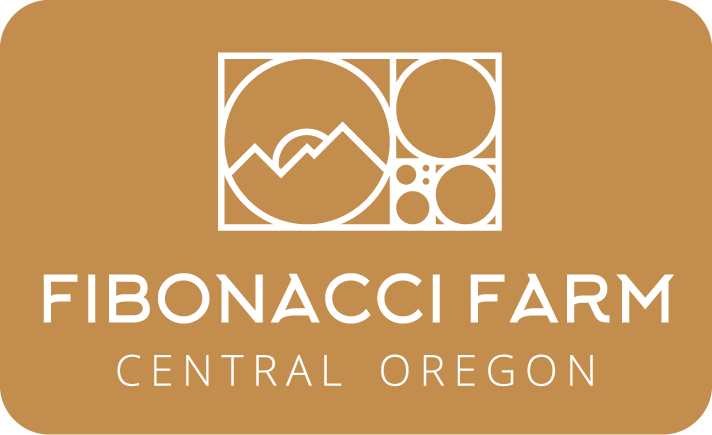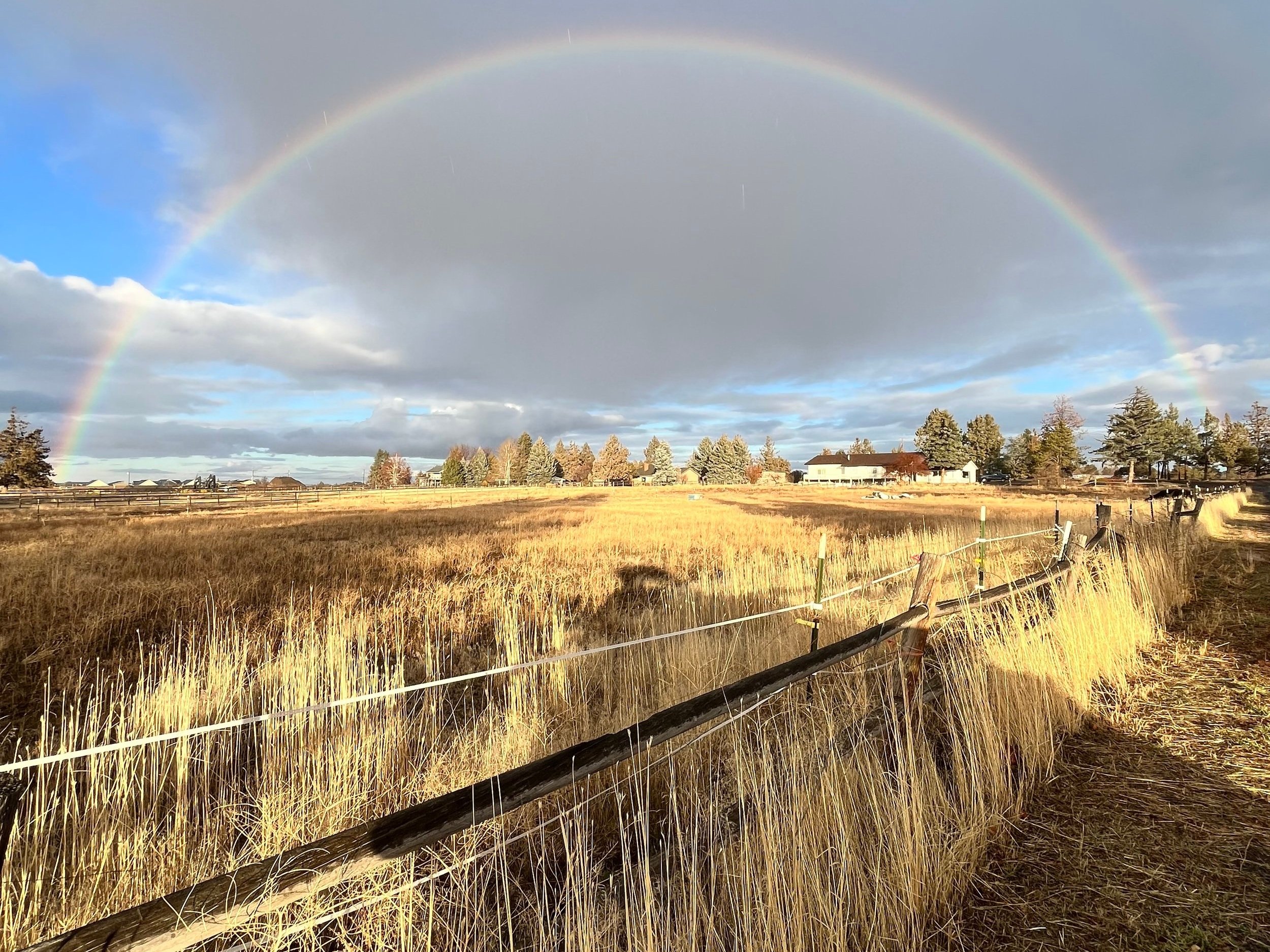“PURA VIDA”
Happy Hygge Time.
We hope you have been keeping cozy by the fire if you happen to be in an area experiencing a frigid winter. At the farm we have been keeping busy chopping a lot of wood, taking care of our chickens and knocking snow off tunnels. December was unseasonably warm and dry, which on the good side, did give us extra time to close down the farm. Since then there’s been a good amount of snow and precipitation in the Cascades; which has been great for skiing and even more wonderful for farming. Here in our High Desert Climate, snow is a critical water resource and supplies 60% - 70% of the water for farms, forests and communities. January was extremely icy and snowy and left us all frozen from a week of single digit temps including a disastrous blizzard that flattened our Propagation House. February: still cold, still getting some snow and still more to come. According to the Cascade Summit Snow Report, we are at 123% of Normal Snow pack which is high for this time of year.
Winter storms may have brought challenges for us, but they've also reinforced the importance of proactive maintenance and repair. Despite the damage inflicted on our propagation house, we've risen to the occasion and installed a more wind and snow resilient tunnel than the D.I.Y. one we had before. This is a brand new 50 ft. caterpillar tunnel with wind bracing and Gothic arches where the snow won’t stick and will fall right off. The tunnel arrived two weeks later than expected causing us to build it as fast as possible during a blizzard only to finalize it under blue skies. However our transplants are thrilled to get out of their cramped indoor grow room and hang out on the heated tables in their upgraded prop house. Now we’ll have enough room for our potted up tomatoes which we plan to plant out in the heated tunnel this April.
Every year it seems the weather gets more extreme. Specifically in the High Desert, we experience drought, smoke from fires, heavy winds, extreme heat and frost can happen at any time making farming successfully a challenge. Recognizing the importance of safeguarding all of our crops against natural disasters, this winter, we have dedicated a lot of time applying for grants that will help fund the supplies and infrastructure needed to make our farm completely disaster resilient.
We are awaiting the news for the approval of our tunnel grant with NRCS, which we resubmitted after not getting it last year. This application consists of two 100ft. greenhouses which will sit next to our two other tunnels in the main garden that will help with extending our growing season and protecting our crops from deer and the weather. It also requests 1000 sq. ft. of low tunnels; these are 4 ft. miniature greenhouses that protect one bed at a time. We also requested frost cloth, compost and landscape fabric - to help us spend less time hand-weeding this season. Our chances should be good so we are crossing our fingers that we will get it this year.
Another big grant we applied for is the Farmer + Rancher Disaster Resilience Grant hosted by the OCFSN. This grant program is only for Oregon farmers and it give extra points to farms that are located in counties experiencing drought (that’s us). In this application we requested three 100 ft. greenhouses, shading improvements for all of our tunnels and worker break areas, a frost resilient irrigation setup for the entire front field including other irrigation improvements, low tunnels, rotational electric fencing for our pasture, a 250 ft wall of willow trees to use as a wind barrier for our crops in the front field, compost and also a BCS walk behind tractor that we plan to share with neighboring small farms in Central Oregon. The small-engine, walk-behind tractor includes implements such as a power harrow for prepping beds, a flail mower for creating green mulch to add organic matter to the soil and a compost spreader that will save us hours and days and backaches moving wheelbarrows of manually shoveled compost. It’s a lot to ask for, but it would be a transformative upgrade to the farm and will vastly improve our efforts with keeping the crops in our garden safe from natural disasters.
Our other big project that has been keeping us busy is our Front Field renovation. After our first year here at our new location, we have decided to utilize the front fields and get them into production and get them GREEN!
This plan entails building out 5 plots in our Southern front field which will add another .65 acres in cultivation for the farm, our biggest project thus far. It will not only double our food production but it will also be in view of the neighboring development. Each plot will consist of different crops. From left to right via the picture, above right: the closest plot to Eagle Rd will be winter squash, then potatoes, next is onions, then we’ll have an entire plot of carrots and last but not least, FLOWERS. The flower plot will be enjoyed by our CSA Members when they pick up their shares since it is located directly next to the CSA Bodega. And if all goes to plan with these grants, we will also align these 5 plots with two more 100ft. tunnels which will add another 10th of an acre of production.
Next to it, in the Northern front field, we will seed a grazing pasture for chickens and livestock. By establishing a green pasture for rotational grazing livestock, it will not only improve soil health and sequester carbon into the ground, but will also keep our costs down on expensive organic feed for our animals.
All of this will take a lot of work and a hell of a lot of planning. We’re trying to keep organized by pursuing tools that can help us stay on schedule and that can consolidate and simplify all of our projects. We are moving away from excel sheets and instead investing in project management programs specific to small farming. It’s been great for keeping our crop plan organized, keeping us on task and also has an app that makes the program easily accessible for our entire team.
This season will be an arduous road, but honestly…it’s really not a lot different then every other season. We’re just faster and better at it now that we’ve done over and over and over…
The best part about this off-season is that we were fortunate enough to take a moment to warm up from temperatures of 4 degrees to go to 94 degrees and pause and reflect on the season. This January we had the opportunity to visit Costa Rica, a land of stunning natural beauty where HEALTH AND WELLNESS reigns supreme! One of the areas we visited was the Nicoya Peninsula in the Guanacaste region of Costa Rica which is a "blue zone"—a region where people live remarkably long and healthy lives. There are only five of these regions in the entire world including: Sardinia, Italy where they live longer by enjoying a longevity minestrone soup; Okinawa, Japan: known as the “land of immortals” who maintain an “in the end…it will work all out, somehow” mentality; Icaria, Greece where they drink goat’s milk instead of cow’s since it is hypoallergenic and contains high levels of potassium and in the United States, Loma Linda, California where this high population of Seventh Day Adventists live longer because of their strong sense of faith and community and focus on daily exercise, eating a plant-based diet and volunteering.
We were both inspired by the Costa Rican way of life and immersed ourselves in the “pura vida” lifestyle which means pure life; a slower, relaxed, stress free lifestyle living happy and carefree while being surrounded by nature. We embraced simple pleasures like watching the sunset, swimming and reading books, and nourished our bodies with wholesome, unprocessed foods like rice and beans, fruits and vegetables and drank smoothies with every meal. The coffee and cacao situation was as local as you can get. We learned about a coffee bean process that Costa Rica is famed for, called “honey-washed” which is now our go-to for coffee. We even ate fresh ceviche on the most beautiful beach we had ever been to (Playa Carilla near Samara in Guanacaste), purchased from a woman that had caught and processed the fish that morning from that very beach, it was amazing!
Returning back to the farm we are rejuvenated and inspired, and we carry with us the lessons of the blue zone—a reminder of the importance of cooking healthy, growing your own food, spending time with family and friends, reducing your stress intake, and having a sense of purpose. These are all things that can help us live longer. The trip made us more passionate than ever to be farming organic vegetables. This pivitol transition between seasons has been a time of renewal, a time for preparation, and time to aid this farm’s vast potential. As we look ahead towards the growing season, we're confident that the farm will emerge stronger than ever.
This season you will find us at the Bend Farmer’s Market on Wednesday’s starting the first week of May and will go through the middle of October. You can also sign up to pick up produce directly from the farm in the Mountain View neighborhood of NE Bend beginning the middle of May.





